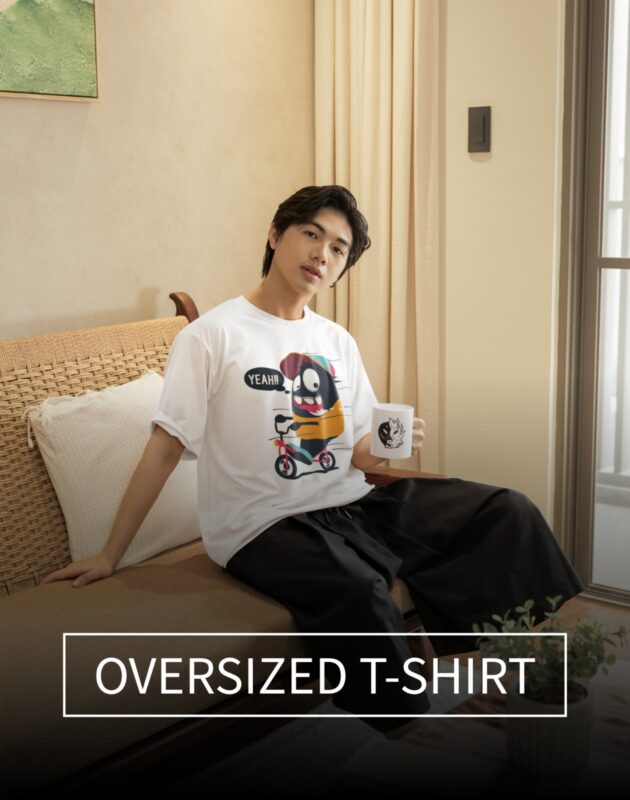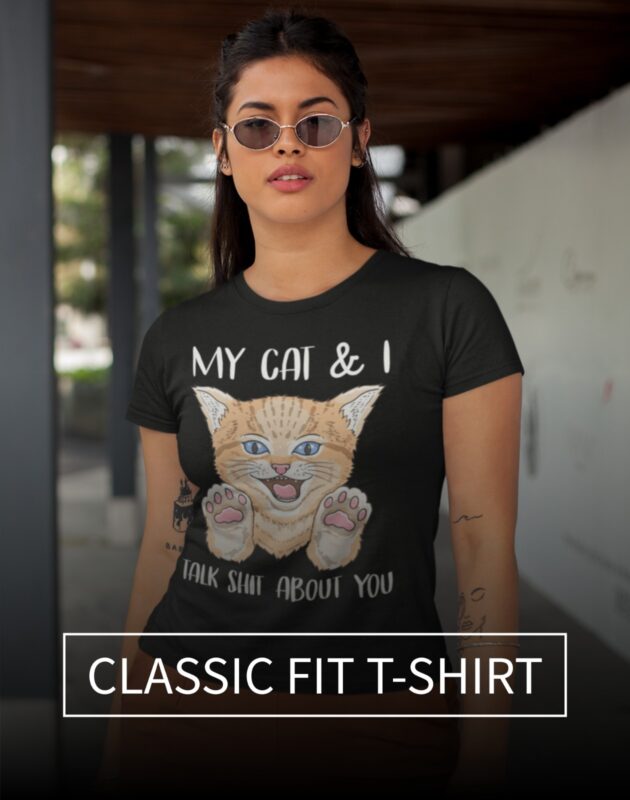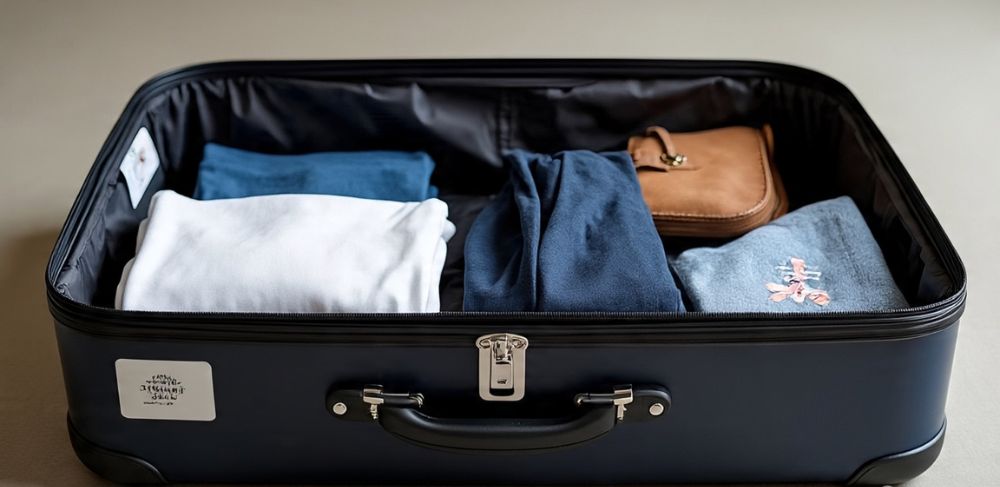30 Outfits, 10 Pieces: Master the Art of Wardrobe Math

Imagine creating 30 Outfits from just 10 clothing pieces—no shopping spree needed, just smart wardrobe math. There’s a quiet kind of power in having less. Fewer clothes, fewer decisions, and yet—somehow—more style, more ease, and definitely more clarity. The idea that you need overflowing shelves and an endless stream of new clothes to look put-together is simply outdated. What actually works? A thoughtful approach. A wardrobe built around pieces that talk to each other, that flex, shift, and adapt to different moods, days, and plans. That’s wardrobe math. Ten pieces. Thirty outfits. One confident, clutter-free you.
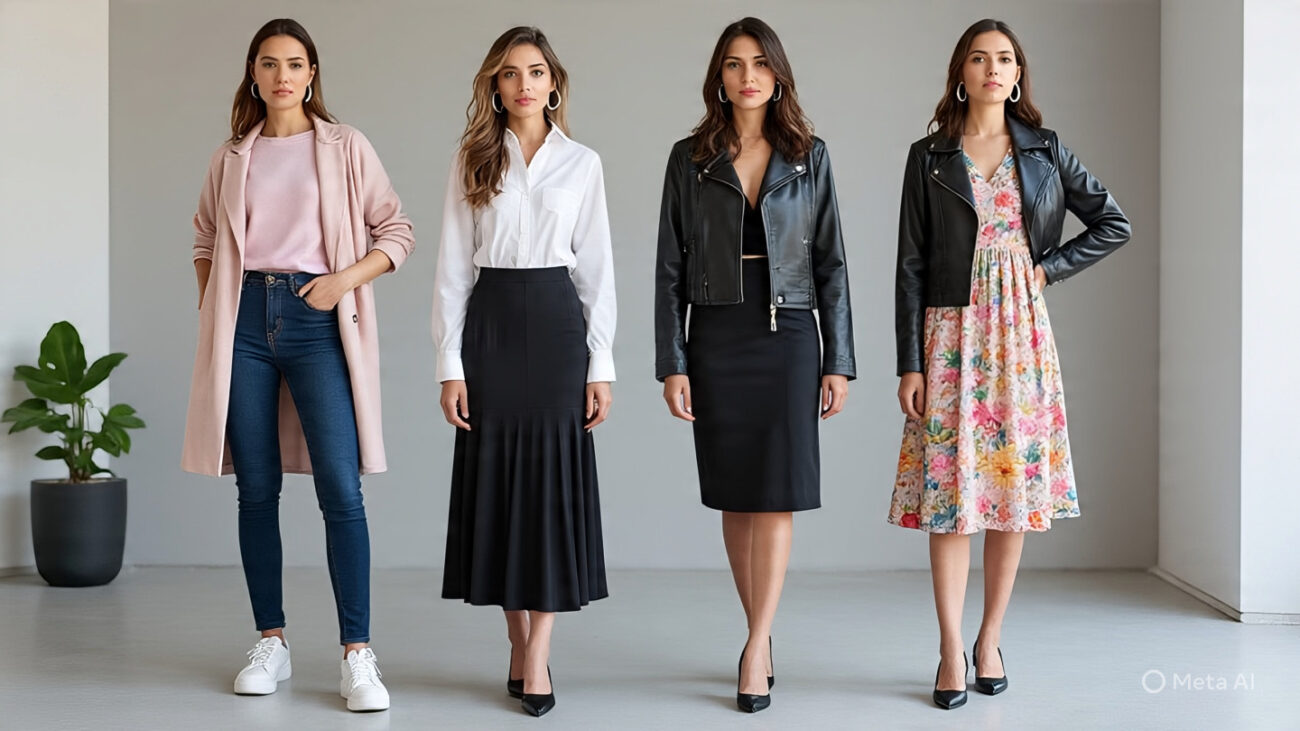
Let’s be real—this isn’t minimalism for the sake of trend. It’s smart, practical dressing. It’s getting creative with what you already own. And it’s something anyone can do, whether you’re building a travel bag, revamping your everyday style, or simply sick of feeling like you have “nothing to wear” despite a packed closet.
The Core Equation: 5 Tops + 3 Bottoms + 2 Layers = 30 Outfits
Think about this. If you own five tops and three bottoms, and each top can pair with each bottom, you already have 15 combinations. Add just two outer layers—maybe a structured blazer and a casual denim jacket—and you’ve doubled that number. Now throw in a few styling tweaks. A half-tuck here, a knotted hem there. Swap your flats for boots. Add a belt, layer a necklace, pull your hair into a sleek bun. Those details? They multiply your options.
This is the real magic behind a capsule wardrobe. You’re not just saving closet space—you’re building outfit formulas that actually work. You can wake up, grab any top and bottom, toss on a layer, and know it’s going to look good. That’s time saved. That’s stress avoided.
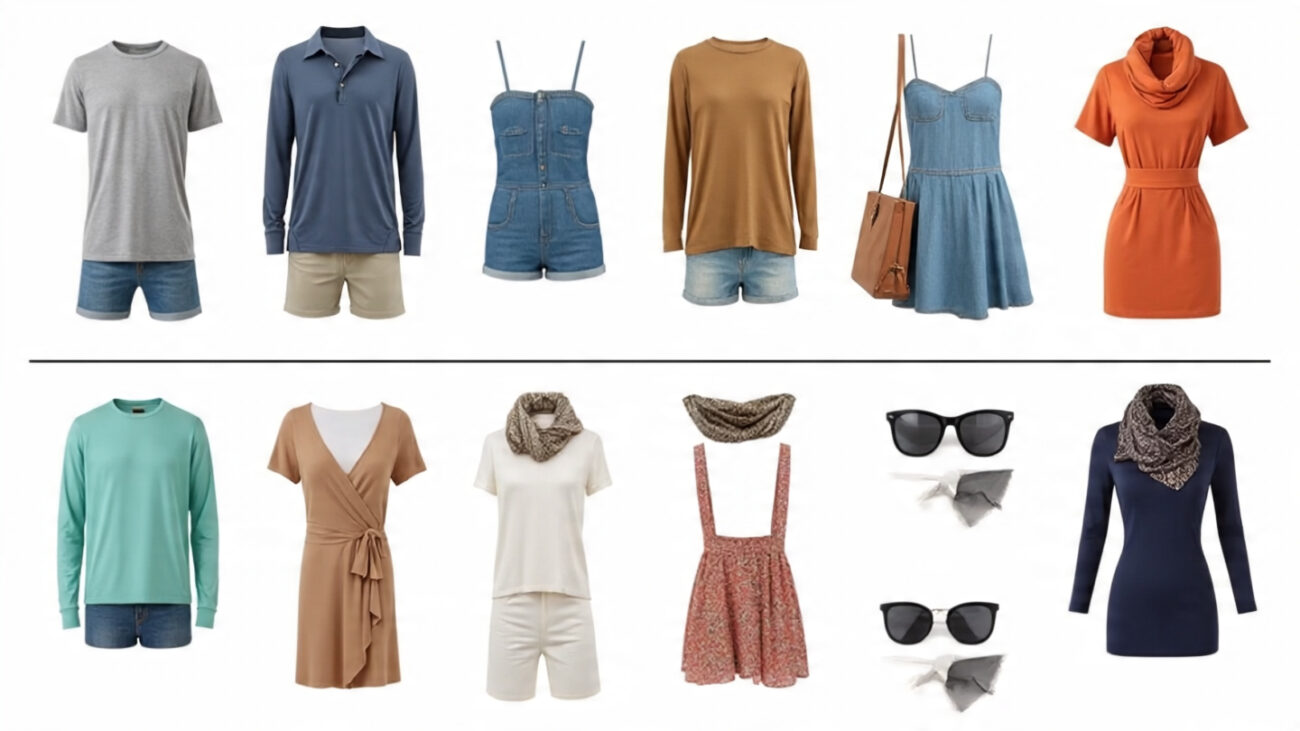
If you’re curious about how to apply wardrobe math while traveling, take a look at 15 Days of Outfits: Master Your Travel Capsule Wardrobe. It’s a practical breakdown of how just a handful of clothing pieces can stretch across two full weeks without feeling repetitive. You’ll find outfit ideas, styling variations, and real-life layering tips that show exactly how less really can be more—especially when you’re living out of a carry-on.
Why Color Palette Matters More Than Quantity
Here’s a mistake most people make: they buy standout pieces without thinking about how they fit into their wardrobe. A neon blouse, a patterned skirt, a jacket with bold prints. All beautiful—but impossible to style unless the rest of your closet speaks the same language.
Wardrobe math only works when you use a unified colour palette. This doesn’t mean wearing the same tones every day, but having three core neutrals—like white, tan, and navy—and one or two accent colours that mix effortlessly. Earthy tones. Soft greys. Warm terracotta. A bold red, maybe, if you love it. When everything complements everything else, outfit creation becomes intuitive, not forced. For a fashion-forward take on creating a cohesive capsule wardrobe, check out this Vogue guide on how to build a capsule wardrobe
The Versatility Is in the Details
Let’s talk practical examples. That soft white shirt you love? It doesn’t just go with trousers. Wear it open over a tank. Tie it at the waist over a dress. Roll the sleeves and tuck it into denim shorts. That’s not one piece—it’s three outfits already. And when styled again with boots, a scarf, or a messy bun? It’s practically new again.
The same principle applies to everything you pack or hang in your closet. A black midi dress becomes daywear with sneakers and a belt bag, then transforms into eveningwear with heels and a blazer. Your cropped knit tank pairs just as well under a shirt as it does over a dress. The more you experiment, the more combinations you discover.

Need help with outfit pairing? You’ll find lots of real-life outfit examples on Pinterest fashion boards or apps like Cladwell and Smart Closet that help you map out combinations using your actual wardrobe.
Accessories: The Quiet Outfit Changers
Accessories don’t just complete your outfit—they completely change it. A basic tee and trousers feel totally different with statement earrings. Add a sleek low bun and bold lip and you’re ready for dinner. Switch to a messy ponytail, throw on a crossbody bag and sneakers, and now you’re dressed for a city walk.
This is the secret sauce in wardrobe math. A scarf, a belt, a new way to wear your hair—these don’t take up space in your closet or suitcase, but they multiply your looks. Keep two to three statement pieces and a couple of neutral staples. That’s all you need.
And yes, even makeup plays a role here. Nude tones for day. A deep plum or burnt orange lipstick for night. Tiny tweaks make big impact.
Stop Chasing “More” — Start Using What You Have
Here’s the thing. You don’t need a bigger wardrobe. You need a better one. And “better” doesn’t mean trendy or expensive. It means intentional. It means curated. It means understanding what works for your life and your style and investing in pieces that can be styled, re-styled, and worn on repeat without losing their charm.
Before you buy something new, ask yourself:
- Can I wear this three different ways?
- Does it match at least four things I already own?
- Will I still wear this next year?
If the answer is yes, then you’re shopping smart. If not, you’re adding clutter.Want to simplify your closet and your mindset? Read The Minimalists’ advice on reducing clutter—it’s not just about fewer clothes, but more clarity.
Real Examples: 10 Pieces, 30 Outfits Looks
Here’s how it all comes together. Let’s say your 10 essential pieces include:
Tops
- White button-down shirt
- Neutral ribbed tank top
- Black crew-neck t-shirt
- Soft beige blouse
- Striped long-sleeve top
Bottoms
6. Black tapered trousers
7. Light-wash straight jeans
8. Flowy pleated midi skirt
Layers
9. Oversized denim jacket
10. Lightweight beige cardigan
Now, let’s map out some simple, stylish outfit combinations using these pieces alone. We’re not even adding shoes or accessories yet (though those will give you even more mileage).Want more inspiration? See this Who What Wear list of wardrobe essentials to refine your own capsule starting pieces.
A Few Outfit Ideas
- Look 1: White shirt tucked into black trousers (sleek for work or dinner)
- Look 2: Ribbed tank with jeans and cardigan (casual day out)
- Look 3: Black t-shirt with midi skirt and sneakers (chic and comfy)
- Look 4: Striped top with trousers and denim jacket (classic and timeless
- Look 5: Blouse with jeans and a low bun (casual meeting look)
- Look 6: Midi skirt with ribbed tank and cardigan (romantic and breezy)
- Look 7: White shirt layered open over the striped top and jeans
- Look 8: Black tee tucked into trousers, belt at the waist, hair slicked
- Look 9: Blouse with skirt and layered jewellery
- Look 10: Tank top under white shirt, worn open, paired with jeans
Now, remix those combinations by:
- Swapping tops and bottoms
- Adding a scarf or hat
- Changing your hairstyle (top knot, braid, bun)
- Layering a shirt over or under a dress
- Wearing the shirt backwards (yes, really)
- Tying your top at the waist instead of tucking it
- Rolling sleeves, cuffing pants, or knotting your skirt hem
- Changing your shoes (sneakers, flats, sandals)
Just from the list above, it’s easy to build out at least 30 outfits unique & wearable. And that doesn’t even count nightwear, loungewear, or athletic gear—which you’d probably carry separately anyway.
Why This Matters Beyond Your Closet
Wardrobe math isn’t just about clothes. It’s about time. Energy. Mental space. It’s about making decisions with more clarity. When you dress with purpose, you start showing up differently—in meetings, in mirror selfies, even on that unexpected dinner invite.
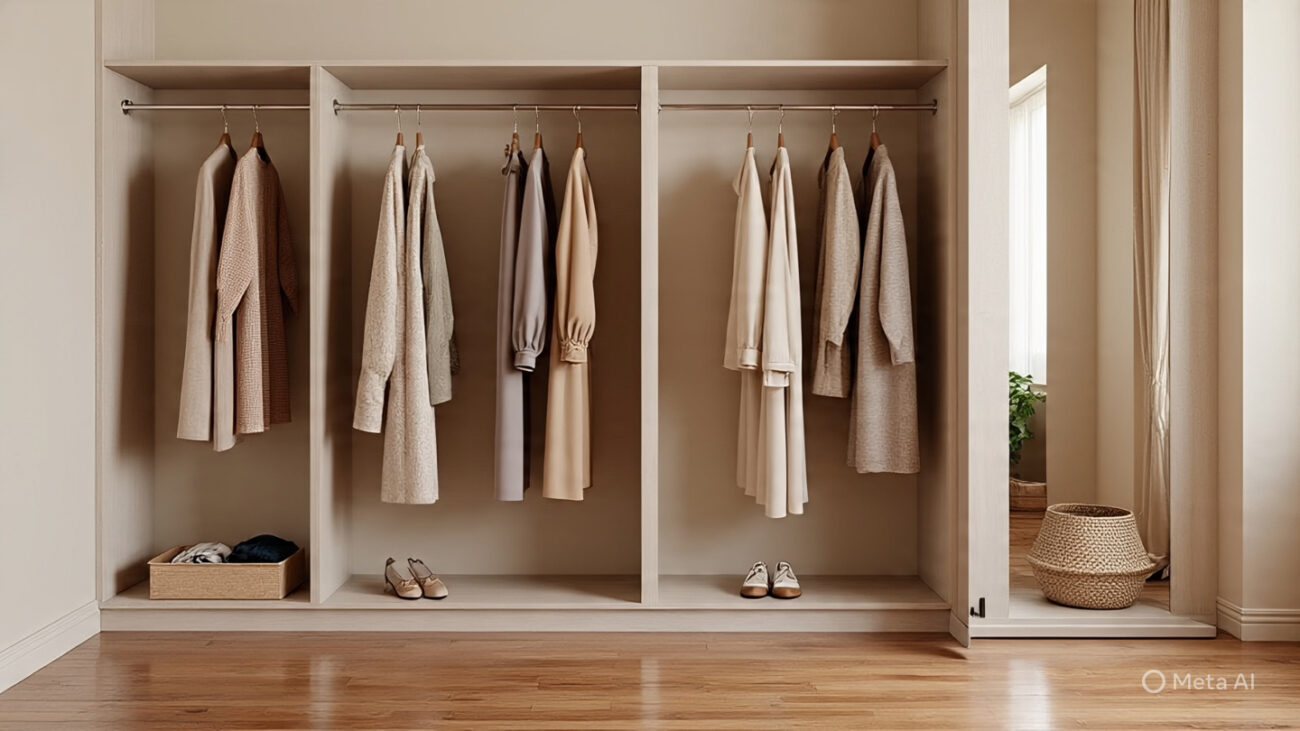
You don’t need to throw everything out and start from scratch. Start small. Pick 10 pieces. See how many outfits you can create from them. Challenge yourself to style them differently every day for a week. The results will surprise you. And once you feel the freedom that comes with having less, you’ll never go back to stuffing your wardrobe with “just in case” items.
Frequently Asked Questions
How can I create 30 outfits using just a 10-piece wardrobe?
This is the core idea behind wardrobe math. With 5 mix and match tops and 3 versatile bottoms, you already have 15 base outfits. Add 2 layers and simple styling tricks—like tucking, knotting, layering, and changing accessories—and you’ll quickly multiply those looks to over 30 outfit combinations.
What are the best basics to include in a capsule wardrobe?
When building a capsule wardrobe, focus on versatile, seasonless items. Good staples include a white button-down, neutral tank, classic tee, relaxed trousers, well-fitted jeans, and a flowy midi skirt. Add a denim jacket and cardigan, and you’ve got the perfect 10-piece foundation.
How can I make repeat outfits feel fresh?
Outfit repeating doesn’t have to feel boring. Change up your look by tucking tops differently, tying shirts over dresses, layering with jackets or cardigans, or swapping your shoes and jewellery. Even a change in hairstyle or a bold lip can give your outfit a completely different feel.
Is this wardrobe math method only for travel or minimalists?
Not at all. Whether you’re simplifying your closet, prepping for a trip, or learning how to create more outfits with less, this method works. It’s perfect for anyone who wants to be stylish, intentional, and stress-free when getting dressed—no matter the setting.
Can a 10-piece wardrobe really work for everyday wear?
Yes, a 10-piece capsule wardrobe is surprisingly practical for everyday life. When your pieces mix and match effortlessly, it takes the stress out of mornings. Plus, it keeps your wardrobe streamlined and helps you rediscover the potential in what you already own.
How do I choose a color palette that allows me to mix and match clothing easily?
Start with 2–3 neutral tones—like white, navy, beige—and add 1–2 accent colors that reflect your personality. When you use a limited palette, mix and match outfits become effortless and cohesive.
Will this method help me shop less and save more?
Absolutely. Wardrobe math shifts your focus from buying more to using what you already have. You learn to shop smart—choosing quality over quantity—and build a wardrobe where every piece has a purpose and gets worn often.
Is there a tool that can help me plan outfits with fewer clothes?
Yes, tools like Smart Closet or Cladwell are great for visually organising your pieces and discovering new combinations from your limited wardrobe.

